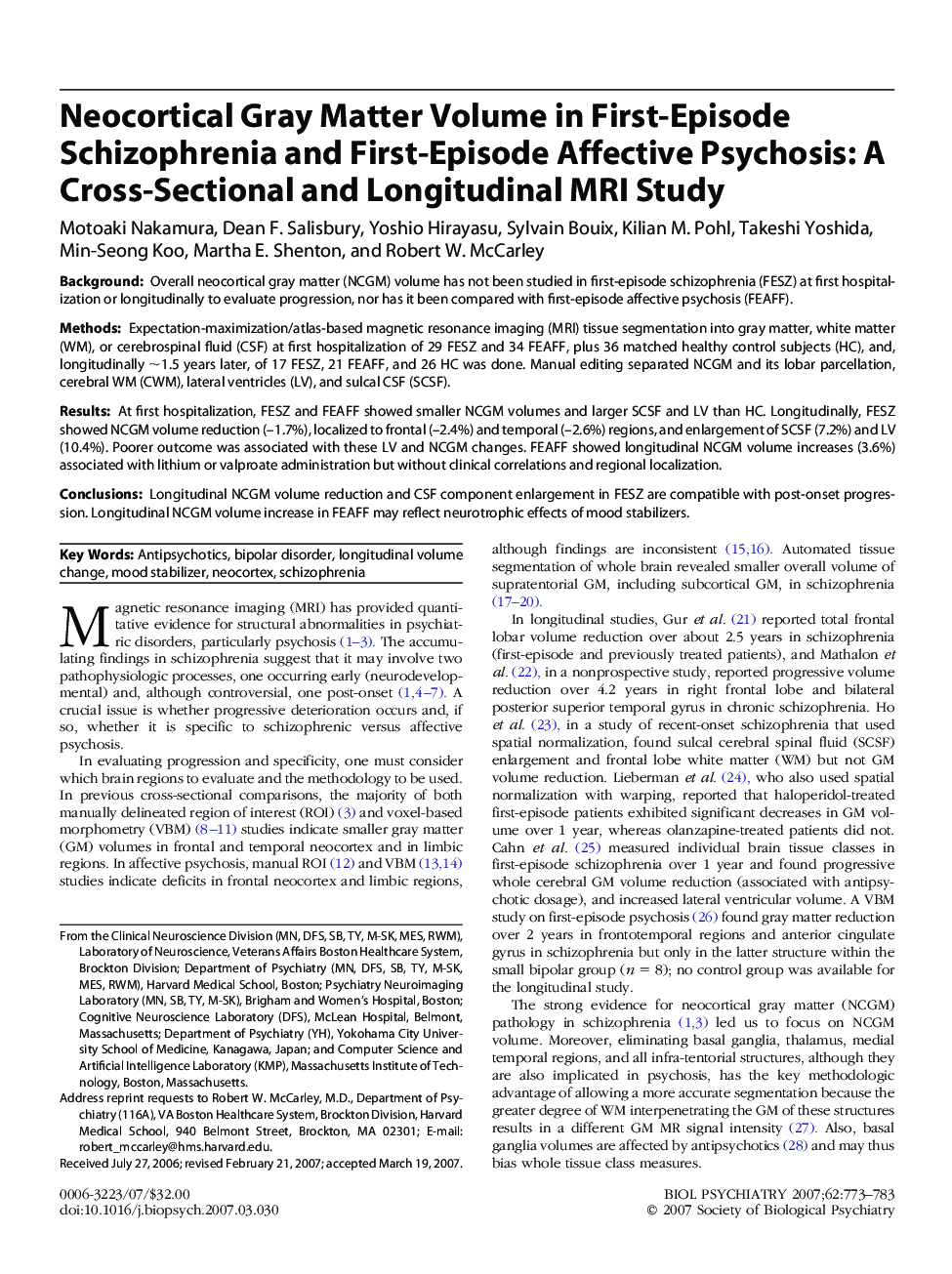| Article ID | Journal | Published Year | Pages | File Type |
|---|---|---|---|---|
| 4180207 | Biological Psychiatry | 2007 | 11 Pages |
BackgroundOverall neocortical gray matter (NCGM) volume has not been studied in first-episode schizophrenia (FESZ) at first hospitalization or longitudinally to evaluate progression, nor has it been compared with first-episode affective psychosis (FEAFF).MethodsExpectation-maximization/atlas-based magnetic resonance imaging (MRI) tissue segmentation into gray matter, white matter (WM), or cerebrospinal fluid (CSF) at first hospitalization of 29 FESZ and 34 FEAFF, plus 36 matched healthy control subjects (HC), and, longitudinally ∼1.5 years later, of 17 FESZ, 21 FEAFF, and 26 HC was done. Manual editing separated NCGM and its lobar parcellation, cerebral WM (CWM), lateral ventricles (LV), and sulcal CSF (SCSF).ResultsAt first hospitalization, FESZ and FEAFF showed smaller NCGM volumes and larger SCSF and LV than HC. Longitudinally, FESZ showed NCGM volume reduction (–1.7%), localized to frontal (–2.4%) and temporal (–2.6%) regions, and enlargement of SCSF (7.2%) and LV (10.4%). Poorer outcome was associated with these LV and NCGM changes. FEAFF showed longitudinal NCGM volume increases (3.6%) associated with lithium or valproate administration but without clinical correlations and regional localization.ConclusionsLongitudinal NCGM volume reduction and CSF component enlargement in FESZ are compatible with post-onset progression. Longitudinal NCGM volume increase in FEAFF may reflect neurotrophic effects of mood stabilizers.
